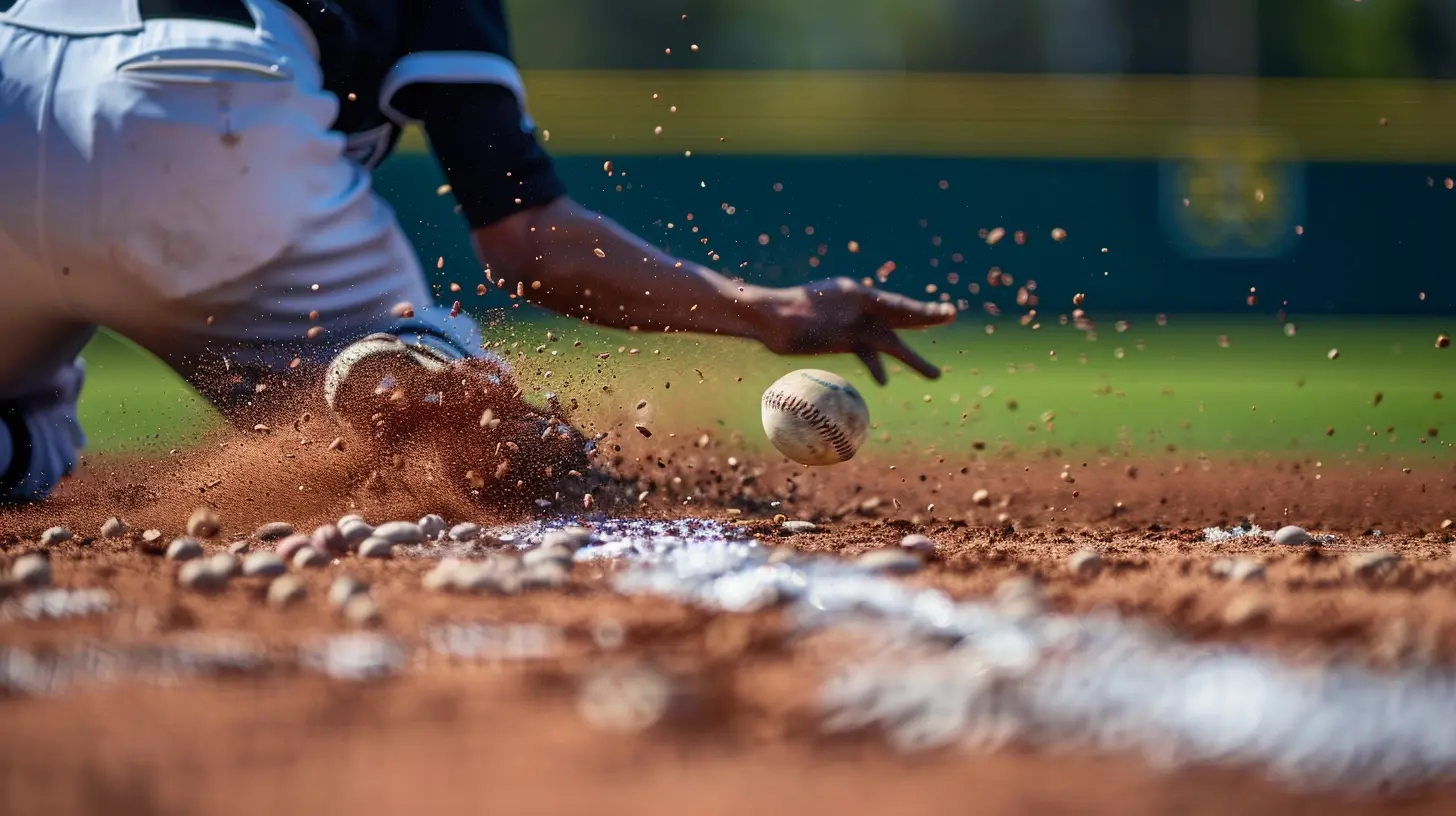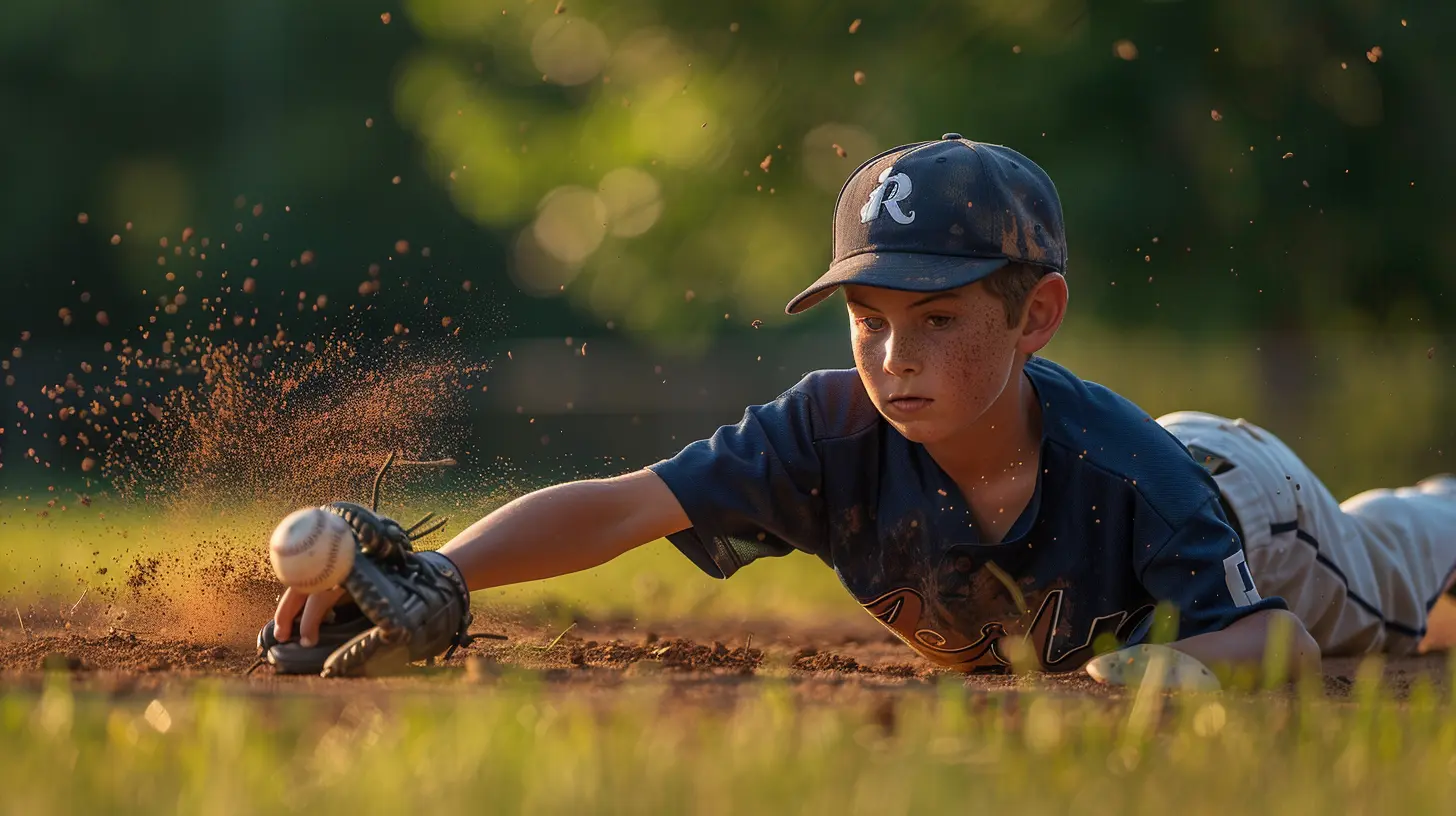How to Improve Your Infield Defense: Tips from the Pros
13 November 2025
When it comes to baseball, defense wins championships. And if you’re an infielder, your job is to be the backbone of that defense. Whether you're turning double plays, making quick throws, or covering the field with cat-like reflexes, your skills can make or break a game.
But let's be real—being a great infielder doesn’t happen overnight. It takes practice, discipline, and some insider knowledge from the pros who’ve mastered the craft. So, if you're looking to elevate your infield defense, grab your glove, and let's dive into some expert-approved tips! 
1. Master the Ready Position
Great defense starts before the ball is even hit. Every pro infielder understands the importance of being in the right stance before the pitch is thrown.What’s the ideal ready position?
- Feet shoulder-width apart- Knees slightly bent
- Weight balanced on the balls of your feet
- Glove low and out in front of your body
This stance helps you react quickly when the ball is put in play. Think of it like a sprinter on the starting blocks—you need to be ready to explode in any direction at a moment’s notice. 
2. Improve Your Footwork
Having fast hands is great, but you also need fast feet. The better your footwork, the quicker you’ll be at getting into position to field ground balls and make accurate throws.Pro Tips for Better Footwork:
✔ Stay light on your feet – Always be on the balls of your feet, never flat-footed.✔ Take short, controlled steps – Big, choppy movements slow you down.
✔ Angle your body properly – Instead of charging straight at the ball, take an angle that lets you get in a good throwing position immediately.
Want a quick drill? Try the ladder drill to improve your agility and quickness. If you can move like a shortstop in a dance battle, you're on the right track. 
3. Soft Hands Make a Big Difference
Ever notice how pro infielders make fielding look effortless? That’s because they have "soft hands," meaning they let the ball come to them rather than stabbing at it.How can you develop soft hands?
- Use the "Triangle" Fielding Position – Your hands, feet, and glove should form a triangle when fielding grounders.- Relax your glove hand – If you're rigid, the ball is more likely to bounce off.
- "Catch" the Ground Ball – Think about fielding as catching the ball with your glove, not just stopping it.
One of the best drills? The barehand tennis ball drill. Toss a tennis ball off a wall and field it with your bare hand—this improves touch and hand-eye coordination. 
4. Quick and Accurate Throws
A great infielder isn't just about stopping the ball—it's about getting outs. That means your throws need to be both fast and accurate.Developing a Quick Release
- Aim for a smooth transition – Get the ball out of your glove quickly with as few movements as possible.- Use your legs – Your power comes from your legs, not just your arm.
- Follow through – A good throw doesn't stop at release. Make sure your arm follows through toward the target.
A great drill? The rapid-fire drill—have a partner toss you grounders and work on fielding and throwing as quickly as possible.
5. Improve Your Reaction Time
Infielders don’t have much time to react. A hard-hit grounder can be on you in a blink, meaning your reaction time must be razor-sharp.Ways to Improve Reaction Time:
- Use reaction drills – Have someone randomly toss balls at you to field.- Hit the gym – Plyometric exercises like box jumps and lateral movements help with explosive reactions.
- Train with a smaller ball – Using a smaller ball (like a golf or tennis ball) sharpens hand-eye coordination.
A great tool is the reaction ball—its unpredictable bounces force you to stay sharp and anticipate sudden movements.
6. Know the Situations
A high baseball IQ separates the good from the great. You should always know where to throw the ball before it's hit.Key Situational Awareness Tips:
🔹 Always know how many outs there are.🔹 Be aware of runners on base and their speed.
🔹 Anticipate where the batter is most likely to hit the ball.
🔹 Communicate with your teammates—silent defenders are liabilities.
Think of it like chess—if you’re always thinking one play ahead, you’ll be a step ahead of the competition.
7. Work on Backhand Plays
Sometimes you won’t be able to get in front of the ball, and that’s when a strong backhand is a must.Pro Tips for Backhand Success:
- Keep the glove low – Get the glove to the ground before the ball arrives.- Stay balanced – Plant your back foot firmly before throwing.
- Follow through – After fielding, use your momentum to make an accurate throw.
Practicing backhand plays with a partner or off a wall can make this advanced play feel like second nature.
8. Master the Double Play
Turning a double play is one of the most exciting defensive moments in baseball. But it's not just about speed—it’s about precision.Tips for a Smooth Turn:
✔ Get your feet in the right position – The quicker you pivot, the faster the turn.✔ Use a short arm motion – No need for a full throwing motion—keep it quick and tight.
✔ Always be ready for the unexpected – If your teammate’s throw isn’t perfect, adjust and still get the out.
One of the best drills is the quick hands drill, where you practice flipping the ball to second base in one motion.
9. Stay Low and Stay Down
One of the most common mistakes young infielders make? Coming up too early. If you lift your body before securing the ball, you'll boot more grounders than you'd like to admit.How to Fix This:
- Keep your butt down and glove low when fielding.- Watch the ball all the way into your glove.
- Don’t rush your throw before you’ve secured the ball.
A drill for this? The rolled ground ball drill—have a coach or partner roll balls to you at different speeds while you focus on staying low through the fielding process.
10. Practice, Practice, Practice
No great infielder was made without tons of reps. Even the best infielders in the MLB still take hundreds of ground balls before every game.What’s a good practice routine?
✅ Take daily ground balls from different angles and speeds✅ Practice low throws and quick transfers
✅ Work on barehand drills for better hand control
✅ Film yourself fielding to break down your mechanics
The key is repetition. The more balls you field, the more natural it becomes.
Final Thoughts
Infield defense isn’t just about raw talent—it’s about hard work, smart preparation, and relentless attention to detail. The best infielders make tough plays look effortless because they've trained their fundamentals to perfection.So, whether you're chasing a Gold Glove or just looking to secure your spot in the starting lineup, use these pro tips, put in the work, and watch your game transform.
Now grab your glove and get to work—those grounders aren’t going to field themselves!
all images in this post were generated using AI tools
Category:
BaseballAuthor:

Frankie Bailey

